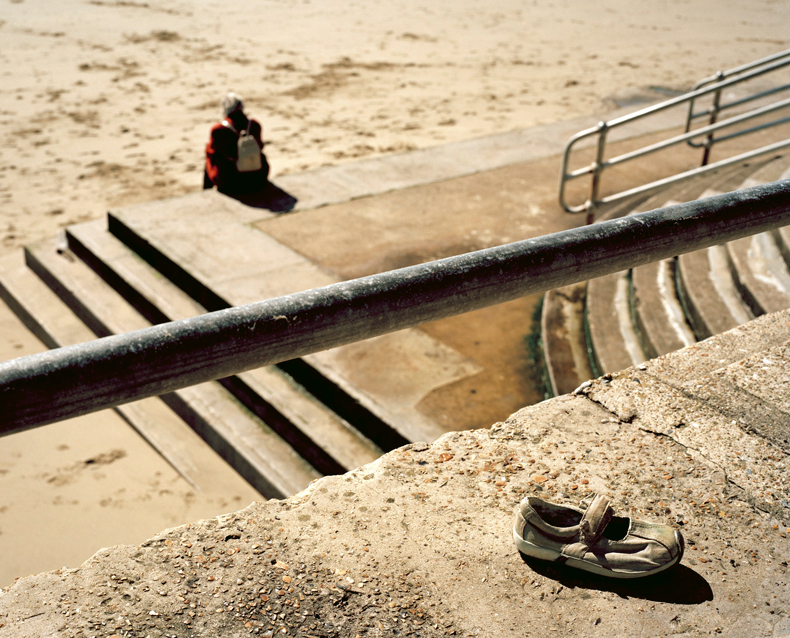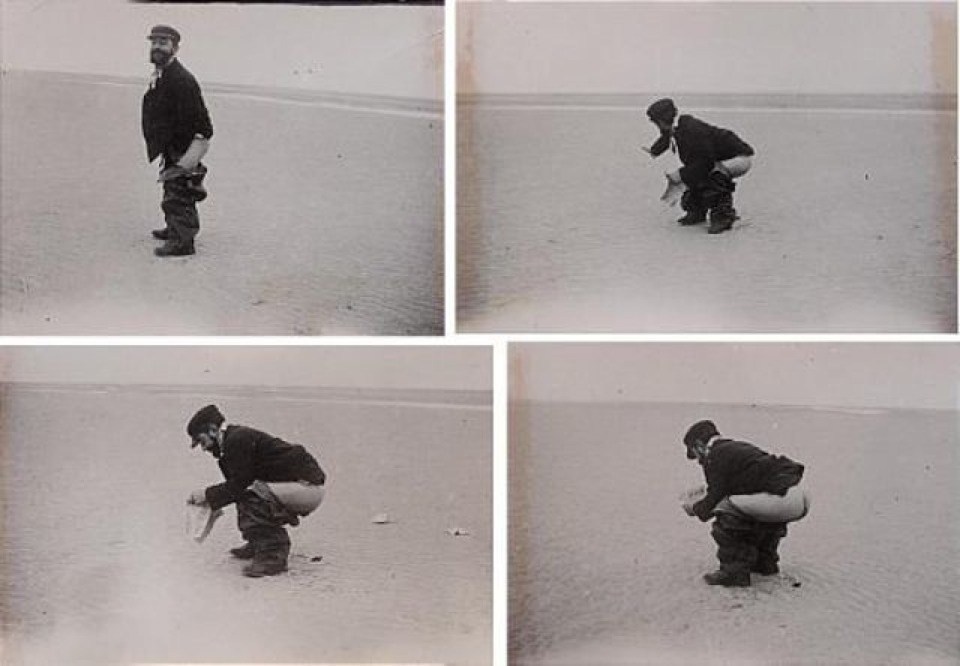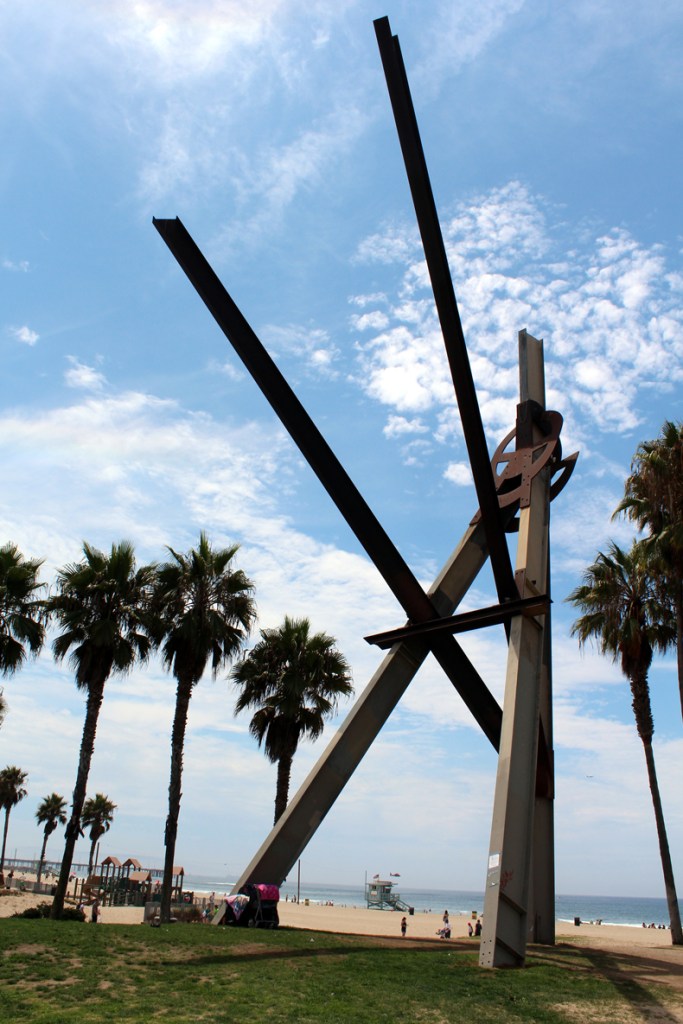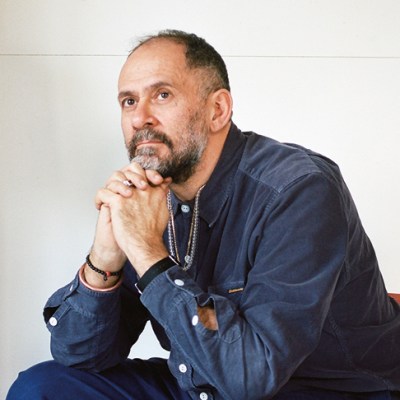With summer in full swing, Apollo rounds up some notable examples of beachside art around the world
L’Estel Ferit (‘The Wounded Shooting Star’), Rebecca Horn
La Barceloneta, Barcelona
‘If a country asks me to make a piece of work for them, I go and live there,’ Rebecca Horn once said. Her public sculptures are known for being deeply rooted in the histories – personal and collective – of their environment, and L’Estel Ferit (‘The Wounded Shooting Star’) on La Barceloneta beach, which was commissioned for the 1992 Olympics, is no exception. Stacked 10 metres high, the sculpture’s four steel blocks memorialise the xiringuitos, or seafront snack bars, that once proliferated along the Barcelona coastline.

Several works by Barry Flanagan (1967)
Holywell Bay, Cornwall
Although he did not identify as a land artist, Barry Flanagan is one of the few British artists associated with the primarily American movement. Among his best-known interventions in the landscape is a series that took place on Holywell Bay in Cornwall in 1967. Flanagan drew a line and a circle in the sand (a ring on holywell beach, cornwall and a line on holywell beach, cornwall) and placed a hessian sack, weighing three tons, beside these marks (easter bag). A few years later he made a film at the same location, recording the temporary trail left by his camera’s tripod as he dragged it across the beach.

The Comb of the Wind (1977), Eduardo Chillida
La Concha Bay, San Sebastián
As the wind blows in from the west towards San Sebastián, it has to reckon with three 13-tonne steelworks by the Basque sculptor Eduardo Chillida, which ‘comb’ the prevailing gusts with their colossal curving tines. Welded into the rock – one pointing upwards, one inland and one out to sea – these sculptures may appear badly rusted, but Chillida deliberately left them at the mercy of wind and rain before having them installed, wanting nature to ‘complete’ his work. The work is given another dramatic dimension not only by the six-metre waves that crash against the rocks but also by a nearby underground tunnel, not designed by Chillida, that channels the waves into geyser-like plumes of water.

Another Place (1997), Antony Gormley
Crosby Beach, Liverpool
‘The idea was to test time and tide, stillness and movement, and somehow engage with the daily life of the beach. This was no exercise in romantic escapism.’ So Antony Gormley describes Another Place, his 100-part sculpture that was permanently installed on Crosby Beach in Merseyside 20 years ago this summer. Originally exhibited on the beach of Cuxhaven in Germany in 1997, the army of solid cast-iron ‘bodyforms’, based on casts of the artist’s own figure, spreads along three kilometres of the Mersey shore and stretches nearly a kilometre out to sea. To mark the work’s 20th anniversary on Crosby Beach, an exhibition by the photographer Ron Davies – comprising 20 snapshots of Another Place taken over the last two decades in various weather conditions – will soon be touring Merseyside.

Musée d’Art Moderne – Département des Aigles, Section Documentaire (1969), Marcel Broodthaers
De Haan/Le Coq beach, northern Belgium
There are plenty of beachside museums, from the Astrup Fearnley Museum of Modern Art in Oslo to Tate St Ives, but conceptual artist Marcel Broodthaers took things a step further with the opening of the ‘Section Documentaire’ of his Musée d’Art Moderne – Département des Aigles on Le Coq beach in Belgium in 1969. Different sections of the ‘fictitious museum’, which Broodthaers explained was both ‘a political parody of art shows and […] an artistic parody of political events’, appeared in various places – from Broodthaers’s home to museums and galleries – between the years of 1968 and 1972. The Le Coq iteration was the most temporary of all: one summer day Broodthaers and a friend carved a floorplan of the museum in the sand, putting up signs for the different sections and forbidding visitors to touch or tread on the invisible objects.
Sun & Sea (Marina) (2019), Rugilė Barzdžiukaitė, Vaiva Grainytė and Lina Lapelytė
Various locations
For their contribution to the 2019 Venice Biennale, Lithuanian artists Rugilė Barzdžiukaitė, Vaiva Grainytė and Lina Lapelytė brought their own beach to the city. Sun & Sea (Marina) is no relaxing day near the surf, though: the sandy stage is a setting for an opera performance that takes as its central theme the issue of anthropogenic climate change. Since winning the Golden Lion for best national pavilion, the performance has been touring the world; this year alone it has been staged in Seoul, Ghent and Bogotá.

Baby Things (2008), Tracey Emin
Coronation Parade, Folkestone
The Folkestone Triennial is upon us again, opening on 19 July and running for three months. A number of high-profile artists contributed to the festival’s inaugural edition in 2008, including Tracey Emin, who grew up in Margate, along the Kent coast from Folkestone. One thing the two towns have in common is their high rate of teenage pregnancy; Emin’s installation Baby Things addresses this directly, comprising articles of baby clothing rendered in bronze and fixed in unassuming locations along Folkestone’s Coronation Parade. Although they may put some viewers in mind of loneliness and abandonment, the sculptures are intended more as a homage to teen mothers than as social commentary.

Henri de Toulouse-Lautrec photographed by Maurice Joyant (1898)
Le Crotoy, Picardie
Henri de Toulouse-Lautrec is best-known for his paintings and prints of bohemian life in fin-de-siècle Paris, but is it possible he also dabbled in performance? A series of photographs from 1898, taken by the gallery owner Maurice Joyant, a close friend of the artist who later became executor of his estate, depict Toulouse-Lautrec in the act of defecating on the beach at Le Crotoy in northern France. Questions abound.

Declaration (2001), Mark di Suvero
Venice Beach, Los Angeles
First installed in 2001 for a temporary art walk, a 60-foot-tall steel sculpture by Mark di Suvero sits on a grassy knoll where street meets sand at Venice Beach. Declaration is a typical example of Di Suvero’s work, in which industrial steel beams are craned into place to create large-scale, linear structures. The work has recently appeared in newspaper headlines because upkeep costs mean the artist’s gallery is planning to dismantle it at the end of this year, unless a private benefactor steps forward.

Scallop (2003), Maggi Hambling
Aldeburgh Beach, Suffolk
Maggi Hambling was born and raised in Suffolk, which is where one of her most famous works can be found: the sculpture Scallop (2003), a tribute to Benjamin Britten, who was a fellow Suffolk native. The outsized steel seashell, which is inscribed with a line from Britten’s opera Peter Grimes (‘I hear those voices that will not be drowned’), stands on the north end of Aldeburgh beach, where Hambling hopes that visitors will ‘sit and contemplate the mysterious power of the sea’. Reception has not been quite so tranquil: the work has been described as ‘the most controversial piece of art in Britain’, with recurring defacements and calls for its removal.



